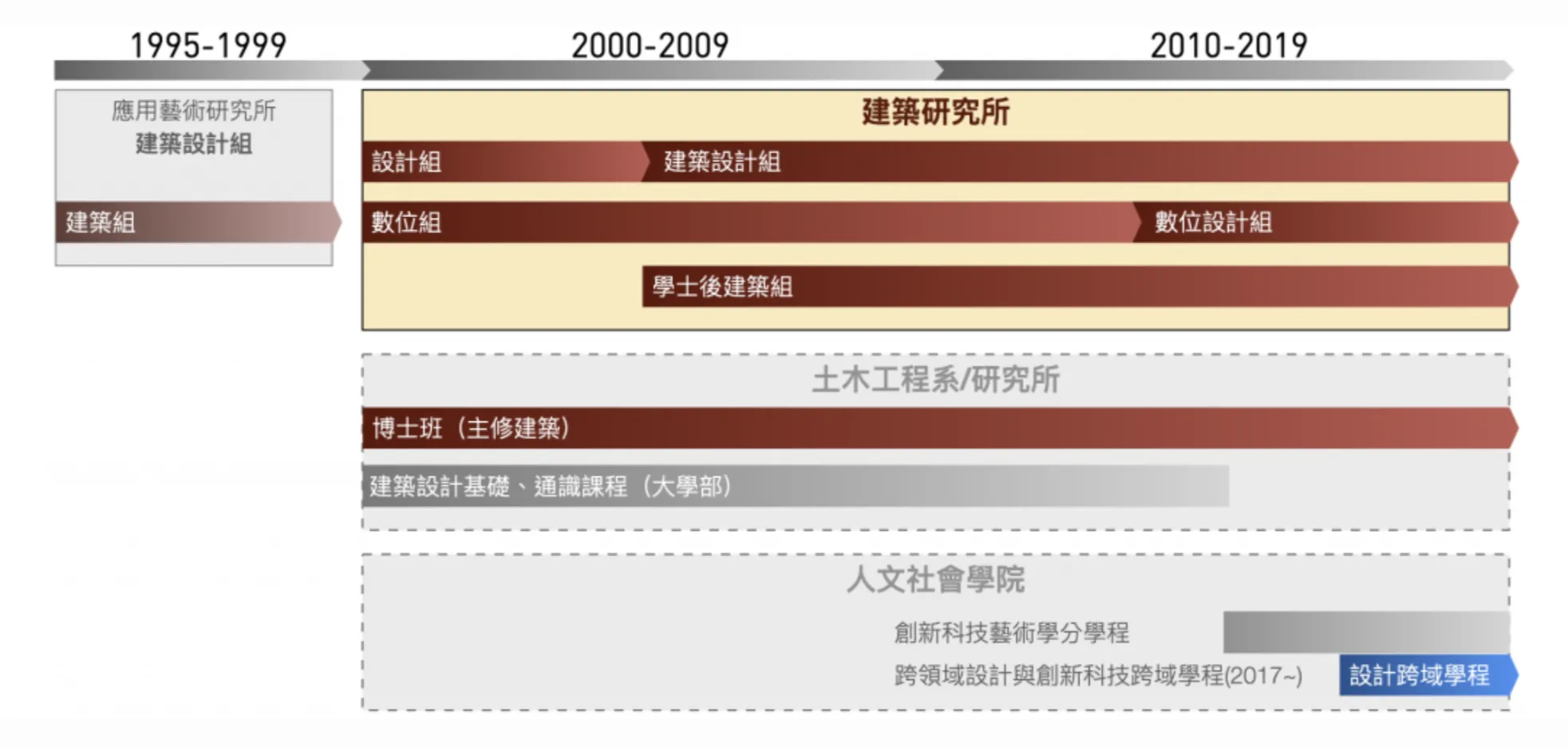

The institute originated as the Institute of Applied Arts – Architecture Group. Its main focus was on research in the Theory of Digital Architecture and the Process of Design Thinking. Professors Yu-Tung Liu and Chi-Yi Chang, along with 7–8 adjunct faculty members, led teaching and research, admitting 5–7 master’s students each year.
Courses were mainly related to computer-based architectural theories, including Artificial Intelligence, Collaborative Design, Design Thinking, Media, Cognition and Computation, and Design Methodology. The goal was to build a foundation for digital architecture theory and to share the university’s research achievements internationally.
To understand architecture in the age of computers and the internet, and to avoid fragmented perspectives, the group emphasized “digital development in architecture” by integrating design creation, theoretical studies, and digital media research. Active collaborations were developed with international institutions such as MIT, Columbia University, and ETH Zurich. The research focused on three areas:
Design Creation: architectural design, design methods, and processes.
Cognition and Computation: design thinking, cognition, and computational theories.
Digital Media Research: development, creation, and application of digital design media.
Architecture, by nature, integrates art (design and methods), technology (techniques and theory), and humanities (culture, society, history, philosophy). Architectural development has always been closely tied to human civilization, from the pastoral, agricultural, and industrial eras to the present. In contemporary times, two key questions emerged: How can theory expand into design? and How can the digital expand comprehensively?
With the rise of digital architecture and avant-garde design, there was a strong need to train design leaders. In 1998, the university applied to establish the Graduate Institute of Architecture. Approval was granted in 1999, and the institute was formally established in 2000.
For architectural design, the institute offered the Master of Architecture (MArch) program for both architecture graduates (MArch II) and students from other fields (MArch I). For digital design, it offered the Master of Science (MS) program for students with backgrounds in architecture or related digital design fields.
Since its founding, the institute has collaborated with the Department of Civil Engineering, jointly developing general education courses and doctoral research supervision.
This period (2010–2019) was marked by faculty renewal, program restructuring, and adaptation to changes in the architecture licensing system and emerging digital technologies. The institute emphasized interdisciplinary collaboration, innovative teaching, and internationalization, and in 2015 reorganized its research focus into two main directions:
Contemporary Architectural Design: primarily the MArch I program for non-architecture undergraduates.
Advanced Interdisciplinary Design Research: focused on digital theory, design science, advanced technologies, and design practice. This included the MArch II, MS in Architecture, and PhD in Architecture, divided into architecture-oriented and digital-oriented tracks.
During this time, educational reforms and the maker movement grew worldwide. The institute expanded its role in interdisciplinary and experimental education, establishing university-level design workshops, interdisciplinary undergraduate programs, and the Bai-Chuan experimental program.
In February 2021, National Chiao Tung University merged with National Yang-Ming University to form National Yang Ming Chiao Tung University. With this merger, fields of health, medical care, and the humanities expanded, and the institute strengthened its interdisciplinary and practice-oriented development. Responding to emerging technologies, computational thinking and artificial intelligence became essential components of the curriculum.
To streamline development, since 2023 (Academic Year 112), the institute reorganized its three groups into two:
Group A: Design Research (Architecture and Digital Design)
Group B: Post-Bachelor Architecture